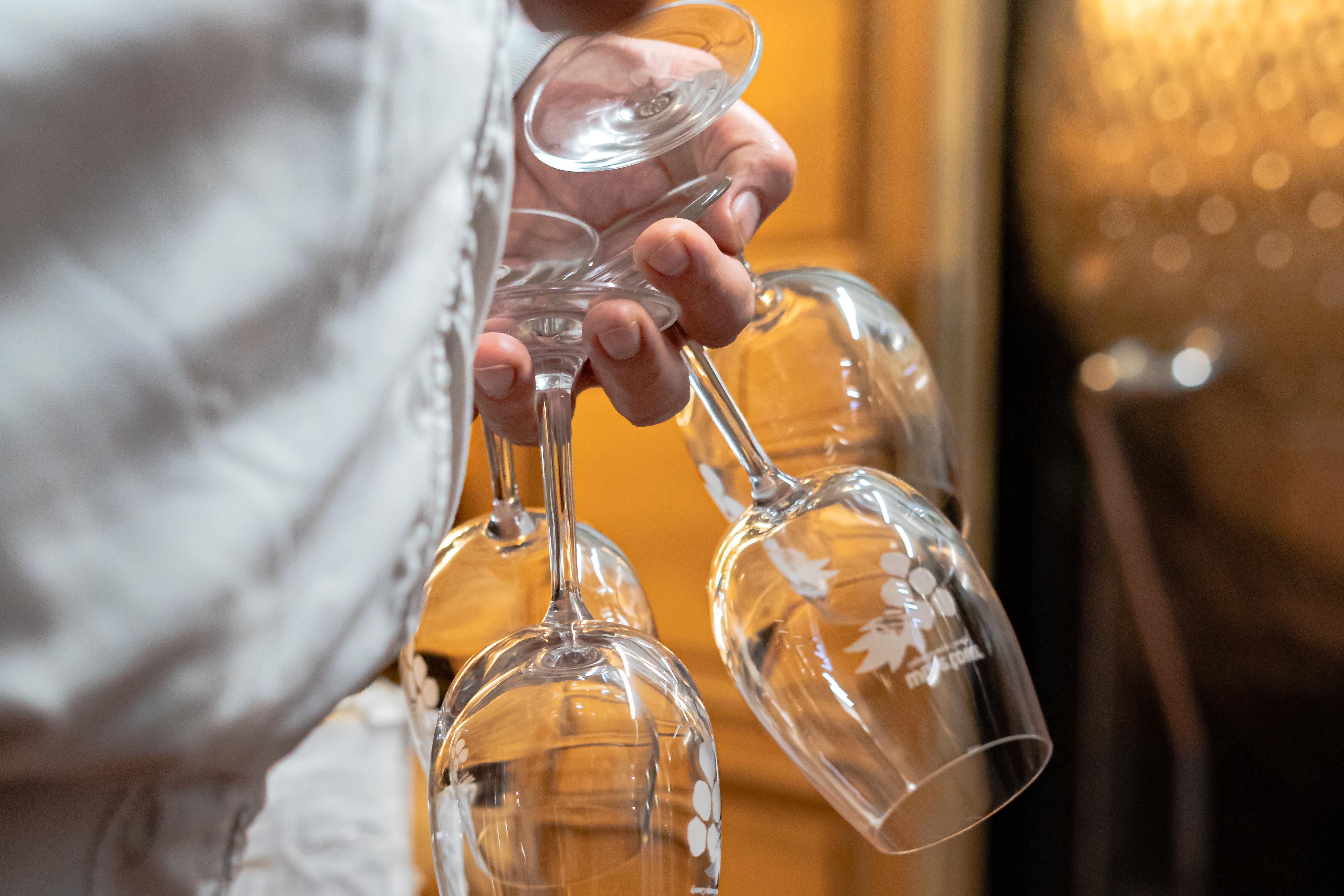Move Aside Tuscany! From Konavle to Istria, Vogue Praises Croatia
February the 21st, 2023 - No less than the well respected Vogue magazine has showered praise on Croatia, hinting that it is better than Tuscany and applauding this country's outstanding wine offer, from Konavle to the Istrian peninsula.
As Poslovni Dnevnik writes, the prestigious Vogue magazine recently devoted some of its reportage to gorgeous Istria, where it singled out several must-visit destinations. Each of the destinations chosen is adorned with beautiful nature, as well as numerous gastronomic charms that should be an excuse for you to pay a visit, according to the mag.
In its report under the title ''Tuscany, move aside - why Croatia should be on everyone's radar,'' Vogue magazine listed several reasons as to why the Istrian peninsula could be a better choice as a holiday destination than Tuscany, B92 reports. According to the magazine, the best of all that Istria has to offer is its impressive wine.
When you think of Croatia, wine may not be the first thing that comes to mind. In addition to turquoise beaches and historic cities that have made Croatia a favourite summer destination, its agricultural wealth consists of hectares of centuries-old vineyards and olive groves that span steep slopes and green valleys.
Last year, Croatia achieved a record at the prestigious Decanter World Wine Awards. It won three platinum and sixteen gold medals, which stimulated even greater interest in small-batch wines. Today, with an increasing international focus on its 130 indigenous grape varieties, theecountry is finally gaining recognition as a destination for wine lovers. Along with this boom in winemaking, a new generation of design-advanced hotels and modern infrastructure have made it easier to stay in the four main Croatian wine regions.
Two of them are located on the coast, and entry into the Eurozone and the Schengen zone have also contributed to Croatia's popularity. Vogue singles out Konavle, Istra and Peljesac as top Croatian destinations for wine lovers.
As for Croatia's wealth of stunning natural beauty, Vogue wrote about river waterfalls and hiking trails, idyllic places and family farms (OPGs). Istria was nicknamed the ''new Tuscany'' because of its signature rolling hills dotted with olive groves, vineyards and forests full of truffles.
Due to its location, the Istrian peninsula has always connected the Mediterranean with the continental part of the country. This is exactly how opposite cultures and influences came together in the best way, which is the basis of the diversity and richness of the gastronomic offer of this peninsula.
For more, check out our dedicated news section.
Exploring Croatian Traditions: Vinkovo, Saint Vincent Blessing Vineyards
January 16, 2023 - If it's sunny on Vinkovo, then " into the barrels abundant wine will flow". If a sparrow bathes in a puddle on that day, winemakers will "bathe" in wine in autumn. If it's a dry day, there won't be any wine either. There is a direct correlation between how much wine the winemakers drink and how fruitful their grapes will be. Those are some of the beliefs associated with the feast of one of the most beloved saints among winemakers. St. Vincent found his place in the calendar on January 22. As Croatian tradition clearly and long has stated, a visit to the vineyards is non-negotioble on the day, regardless of the winter weather conditions.
As Agroklub writes, many traditions are tied to Vincekovo, Vinceška, Vincelovo, Vinkovo... as this holiday is called in different parts of continental Croatia, but the most common one is the blessing of vines.
A blessing for a more fruitful harvest
In a prayer with the priest, winemakers with their friends invoke God's blessing "for bountiful harvests and abundant fruits of all kinds, above all rich grapes" in the coming year, but also protection of the vines from frost, hail, disease, pests... in short, anything that can cause damage.
In the east of Croatia, holy water is sprinkled or blessed wine poured over a vine on which kulen, sausage or schvargl are hanged. This will ensure that the year's clusters of grapes are at least the same size as the meat.
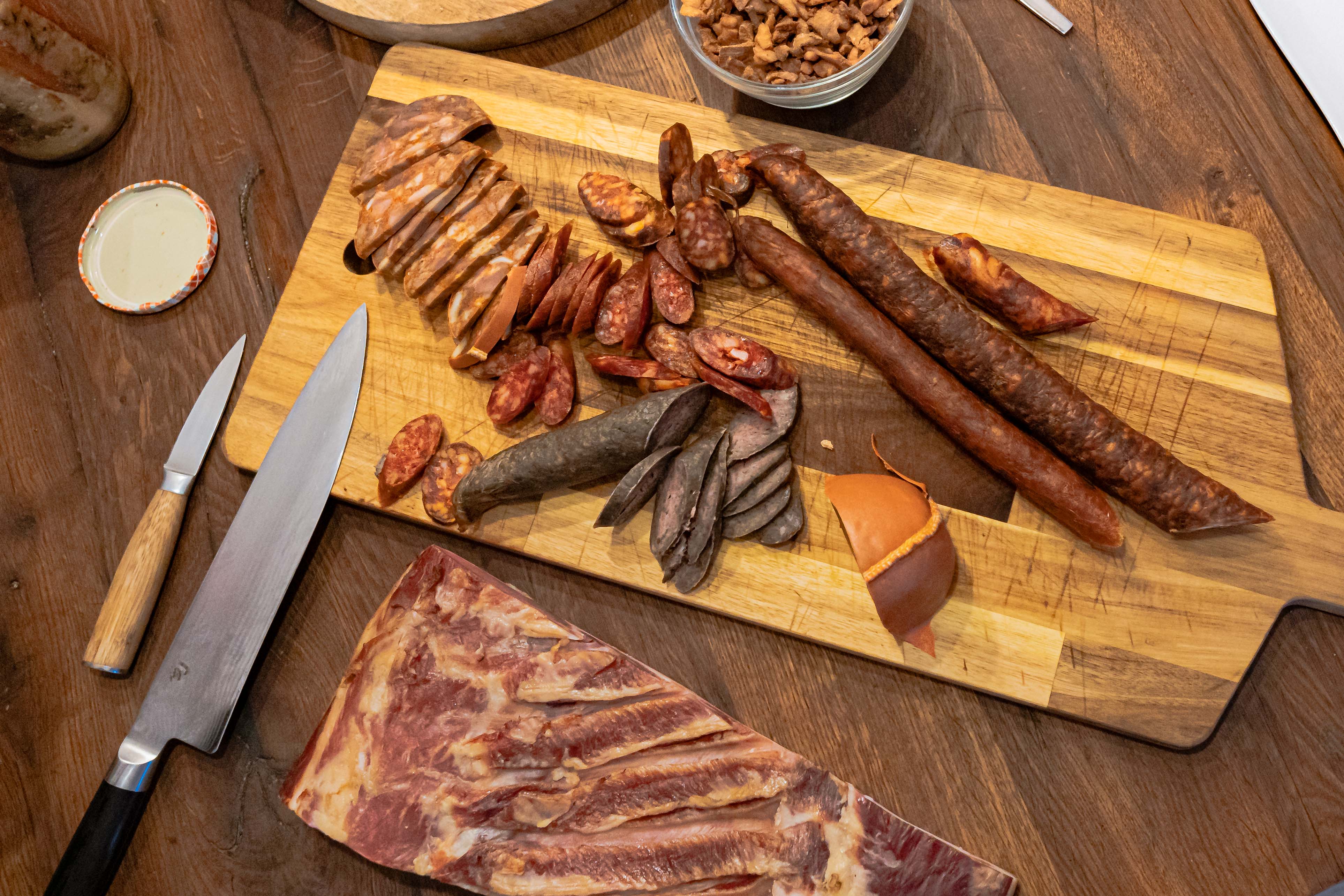
Steve Tsentserensky
In some places, the host consecrates the vineyard by sprinkling holy water on all four sides or pouring blessed wine in its four corners. In the northwestern parts of the country, a prayer is said to God to protect the vine and keep it safe from hail and frost, and to St. Vincent for a good year ahead. The traditional prayer in Croatian: "Dragi Bog čuvaj trsa mog, evo Ti zrelog vina da bu dobra godina. Oblake razmakni, sunce primakni, mraza zgoni, na tuču zvoni. Se bum obdelal da bi v jesen popeval. Rozgvu si bum zel i vu vodu del. Sv. Vincek pokaži svetu kak bu vu novom letu".
And just as this prayer says, the host then takes a pair of scissors and with the first cut of the vine marks the beginning of the year's pruning and thus symbolically starts the new season. A cut off branch is taken into the house, where it buds in a warm place, and based on the number of buds, the hosts can predict how fruitful their crop and the year's harvest will be.
Kulen for the Vincilir (Vineyard Master)
Traditionally, after the "official" part, many guests toast with good wine to a successful start of the year, cheerfully singing, next to an open fire. And where there's fire, there's bacon or sausage roasteing on sticks, maybe some shepherd's or wine bean stew cooking. The crowd also enjoys the kulen that hanged on the blessed vine. Traditionally, though, this kulen would be given as a reward to the Vincilir, the man who looked after and cultivated the vineyards 'as if it were his own'. This stems from times when Vincilirs had to travel by horse-drawn carriages from the Slavonian villages to the vineyards, which took a lot of time and energy.
In some Croatian regions, this celebration is exclusively for men,since according to another popular belief, the presence of children or women would invite hail.
In Moslavina, on the other hand, beliefs dictate that there should be enough wine at the celebration to last until the evening, because otherwise (again) hail would destroy the vineyard. If water leaks from the eaves on the day, the year will be wet and the harvest rich. To protect themselves from evil spells, people there hang a wreath of garlic on the porch.
Some winemakers also open their cellars for the blessing of young wine, so on that day fans of this elixir can have a long celebration with a spontaneous tour of several cellars along a wine road. It is practically unimaginable that any host who cares about their reputation does not host everyone who comes by on that day.
Steve Tsentserensky
Five "commanded" holidays
It is interesting that the 'wine saint' does not really have any concrete connection with vineyards or wine, if this clarification is sought in a religious sense. According to his biography, this early Christian martyr, deacon Vincentius lived in Spain, today's Saragossa, in the 4th century, during Diocletian's persecution of Christians. In order to renounce his faith, the proconsul Dacian subjected him to terrible torture and threw his body to the beasts. According to the legend, his tortured body was saved by a raven, so he was thrown into the sea with a stone around its neck, but the sea washed his body ashore. He is commemorated on the day he died in 304, and his relics are preserved in Lisbon.
It is to be assumed, therefore, that the connection can be sought with some pre-Christian or pagan ritual of farmers, given that it is in the calendar part of the year when the beginning of the new vegetation and the new cycle of agricultural work is expected. Some associate the celebration of Vinkovo St. Vincent with the god Dionysus, who was celebrated in ancient Greece at the beginning of February. Barrels with new wine would be opened, all to be drunk, thus marking, just like Vinkovo, the awakening of nature.
Most people support the simplest interpretation, according to which they began to worship this saint as their patron because the root of his name in many languages is 'wine'.
All in all, Vinkovo is one of the five "commanded" holidays of winemakers rooted in Croatian tradition. There are also St. Juraj (April 23), St. John the Baptist (June 24), St. Michael (September 29) and St. Martin (November 11). Traditions dictate that for Jurjevo new vines should be planted, while pruning, fertilizing and digging of the old vines should be completed. For St. John the Baptist, the vines are should be weeded and sprayed for the second time. After this memorial day in the vineyard, the vines are plucked and regular spraying is done, then Miholje awaits, which marks the beginning of the harvest. Active work ends, and winemaking begins for Martinje, when young wine, freshly produced must is blessed.
For more, make sure to check out our dedicated Lifestyle section.
WineOs - 8th Edition of Osijek Wine Fair Featuring Exclusive Workshops
December 18, 2022 - The New Year is approaching, and with it, a real treat for true hedonists - WineOS. The eighth edition of the fair of wine, delicacies, and pleasant living will once again offer its visitors exciting content and the best wines and delicacies from eastern Croatia, as well as guests from other parts of Croatia and abroad. It is happening at the traditional Gradski Vrt venue in Osijek.
As SiB writes, one of the biggest lures for many wine lovers will be the wine workshops organised by the famous wine author Željko Garmaz. Speaking of popular wine stories, which regularly attract guests to WineOS, the biggest novelty is that starting next year, there will be even more workshops, and they will take place over three days, January 12, 13, and 14. Therefore, eleven excellent workshops await on Thursday, Friday, and Saturday, featuring interesting, exclusive, and attractive topics, winemakers, and wines.
Three different topics will be explored on the first day, Thursday, January 12. At 3 p.m., representatives of Belje, one of the largest and most important wineries in eastern Croatia, will go on a journey through time into the wine past. That is, of course, tasting archival wines with interesting stories around their creation. From 4:30 p.m., sommelier Klaudio Jurčić, who has ventured into the wine industry, will talk about his friendships with winemakers while the guests are tasting his wines. The last workshop of the day, which starts at 6 p.m., is also a treat and will lure all true wine lovers. The famous Hungarian winemaker from Villany, Attila Gera, will present a vertical of his black coupage from the Kopar location.
On Friday, January 13, four workshops are scheduled, and the program will be opened at 1 p.m. by Gianfranco Kozlović with a vertical of his malvasia. At 2:30 p.m., all visitors will have the opportunity to meet another Istrian, Bruno Trapan, and his Uroboros, or aged malvasia. From Istria, at 4 p.m., the visitors can move to Fruška Gora and the Erdevik winery, which will present a vertical of its award-winning Omnibus Lector chardonnay. From 5.30 p.m., the story of the village of Umčani from the Vrgorac region and the Gašpar brothers will round it all up.
On Saturday, January 14, four unique workshops will take place as well. At 1:00 p.m., the visitors will have the opportunity to get to know the top-quality wines from the Croatian winery of the famous Mike Grgich. An hour and a half later, the story about the expansion of the Galić winery in Dalmatia and getting to know the "sea ego" of Jozo Galić is on the schedule. At 4:00 p.m., another treat for lovers of unique and different wines – a workshop of kadarka from Oszkár Maurer's cellar. The end of the programme is dedicated to the Herzegovinian winery Nuić and the native variety trnjak.
Finally, let's note that tickets can only be purchased in advance at the Viniti wine shop. Reservations can be made by e-mail at This email address is being protected from spambots. You need JavaScript enabled to view it. or by phone at 098/1747-108. The price of individual tickets is HRK 150 or HRK 200 (depending on the workshop), while daily packages cost HRK 500 each. There are 20 tickets for each workshop, so get in touch as soon as possible to reserve your spot! You can find more information about the workshops on the WineOS website.
Wine Tourism in Slavonia and Baranja: Interest Surpassing Capacities
November 17, 2022 - Although wine tourism in Croatia has excellent potential among domestic tourists, and it is a niche that generates great added value and links the development of other segments of the economy, this potential is poorly utilised.
As Poslovni writes, there are no wine hotels, museums, entertainment facilities, or wine roads. However, the interest of potential guests is high, according to an extensive survey conducted by the Improve agency with the consulting firm BlueRock (BRC) this September.
An excellent example of Austria
The research will also be used for the new Strategy for developing wine tourism in Slavonia and Baranja, which BlueRock is working on for the association Graševina Croatica, the largest association of winemakers in Slavonia and Baranja, confirmed Emanuel Tutek, a partner in BRC. "Wine tourism is one of the leading tourist products in Croatia, and at the same time, no Slavonian county has got any strategic document for the development of this product, although the wine business is one of the aggregates for the development of value-added tourism. At the same time, wine tourism is an important lever for the development of winemaking itself and agriculture, as shown by the example of Austria, which successfully connected these two segments, but not without large investments. Wine tourism and winemaking then promote the export component," said Tutek for Poslovni Dnevnik.
Until now, there was no qualitative data on the potential market, i.e., guests who are users or are interested in wine tourism. Of the total number of foreign guest arrivals in Croatia, it is not known precisely how many are wine tourists, that is, those whose primary motive for coming is wine and wine experiences.
There are only estimates for Istria, the leading tourist region with 21.7 million overnight stays in 2021, of which foreign guests make up 85 percent. Istria also has the most developed wine tourism.
It is estimated that wineries in Istria have around 290,000 visitors per year, among whom 30-35% are local, which means that the share of local visitors in Istrian wine tourism is twice that of their share in total arrivals.
BlueRock commissioned research that pointed to additional potential from the domestic guest segment. The study was conducted using an online survey, and respondents were recruited from the ImproveOnline panel.
The research showed 71 percent of respondents were not wine tourists in the last two years. On the other hand, 74 percent of respondents have an interest in wine tourism.
"Therefore, there is a significant market potential that has not yet been used; that is, there is a lack of supply. It is basic, and its development can address potent consumer segments. Visiting wineries is the most common form of wine tourism in Croatia, as are tours of the wine roads. Wine tourism activities, especially with greater added value, such as wine education and workshops, are popular among younger ages (25-34 years) and those with above-average incomes. At the same time, wine events and attractions are better attended in continental Croatia," the analysis states.
The survey also showed that 56% of wine tourists visited the regions of continental Croatia, which is influenced by the proximity of Zagreb. Tutek sees even greater significance in the hilly wine regions north of Zagreb and Slavonia, their current focus.
For the development of wine tourism, the tourist value chain is also necessary, which means that accessibility should be increased, and all necessary infrastructure should be provided, from accommodation, restaurants, museums, and interpretation centers to the development of destination management companies. Tutek notes that this is not the winemaker's job, although it most often boils down to that, as shown by the example of Plešivica near Zagreb.
For more, make sure to check out our dedicated Travel section.
Croatia's Area Under Vineyards Increases by 7% Since 2019
ZAGREB, 20 May 2022 - The Ministry of Agriculture on Friday reported that according to the Croatian Bureau of Statistics, in 2021 the area covered with vineyards increased by 7% compared with 2019 and now amounts to 21,213 hectares.
This has resulted to a large extent from the Ministry's contribution of HRK 416 million (€55.5 million) from national aid schemes from the 2019 - 2023 wine envelope.
The ARKOD register in the Agriculture Payment Agency has 18,126 hectares registered with vineyards which relate to areas receiving subsidies and professional wine producers.
The difference can be attributed to vineyards kept as a hobby and others which also strongly contribute to Croatia's wine production, the ministry said.
The ministry notes that the measures within the wine envelope also encompass the Restructuring and Conversion measure with HRK 90 million in support, HRK 56 million of which has been paid so far.
At the same time, HRK 298 million has been made available under the Investments in enterprises measure.
In reference to the hardship experienced during the corona crisis, in addition to increasing the intensity of subsidies in the wine envelope, two crisis measures were introduced in 2020 and 2021 which the European Commission approved during Croatia's presidency of the EU.
About HRK 76 million was invested in 2020 alone to help stabilize the market against the backdrop of a drastic fall in wine sales during the COVID crisis, the ministry said.
(€1 = HRK 7.529183)
For more, check out our business section.
Croatian Souvenirs: 10 Things That Fit in Your Suitcase
31 March 2020 - After wandering the cobblestone streets and soaking up the Mediterranean sun, maybe you’re thinking of picking up something to remember your time here, or to share a part of your travels with loved ones back home. Here are some unique Croatian souvenirs you won’t find anywhere else. And better yet, most of them fit into your carry-on! All the better for those last-minute shopping trips before hopping on your flight home.
Lavender products
Did you know that lavender originated from the Mediterranean before growing in popularity around the world? 50 years ago, Croatian farmers were producing up to 10% of the world’s lavender flowers, before a series of wildfires decimated the industry.
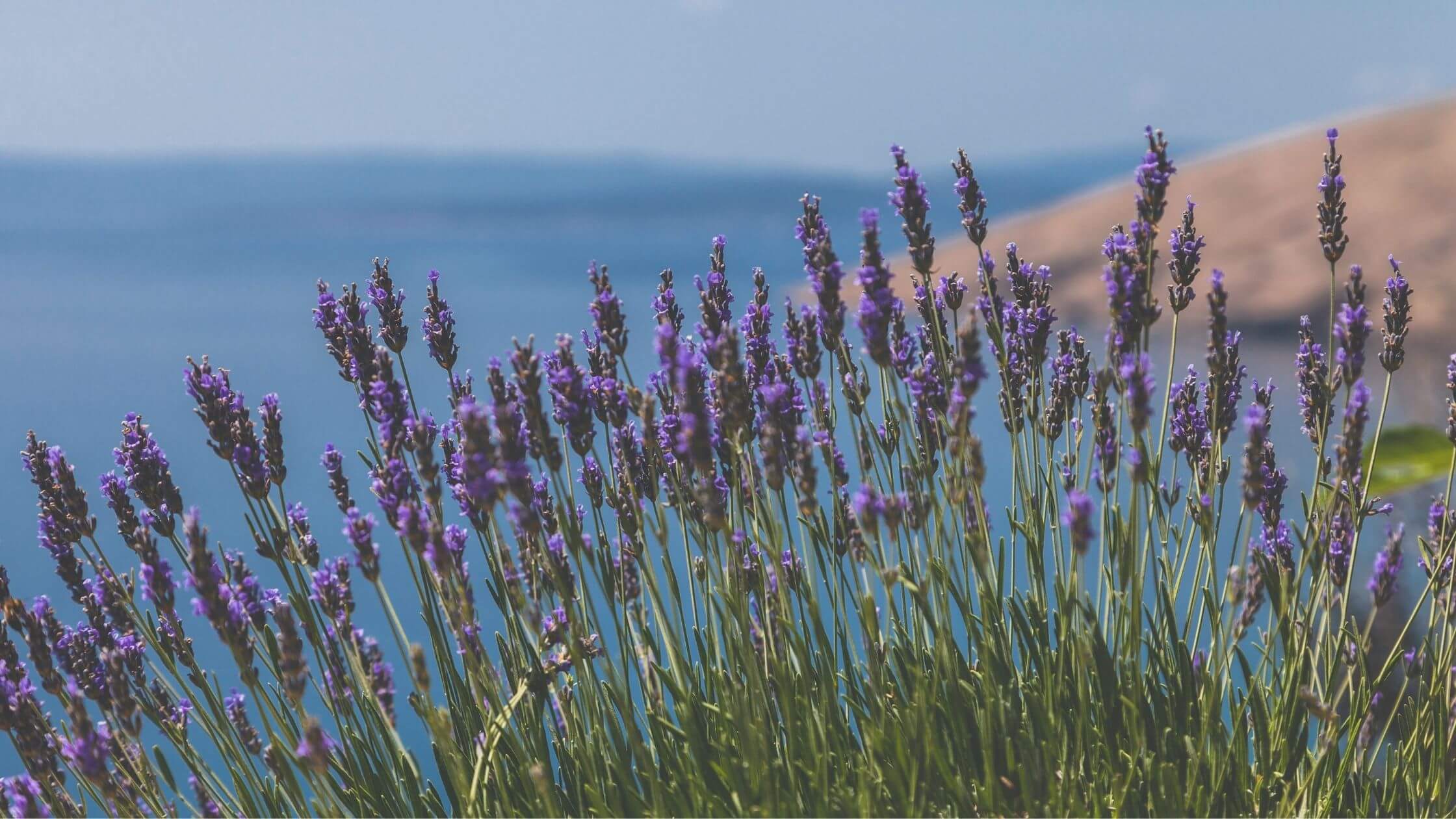
Visit some of the most gorgeous lavender fields on Hvar, an island in the South of Croatia. (Image: Pexels)
Today, Croatian lavender production is making a comeback. Harvested in the Fall, its calming herbal essence is infused in a variety of products like soaps, lotions, and oils. Pick up a bottle of lavender oil, where just a couple drops in an infuser or laundry, goes a long way.
Istrian truffles
The dark, dense forests in the hinterlands of Istria provide the perfect breeding ground for Croatian truffles. So much so that in 1999, Giancarlo Zigante, a local truffle hunter found the largest truffle in the world at the time, weighing 2.86 pounds (1.29 kgs). He later had the “millennium” truffle cast in bronze before selling it at a whopping USD$330,000 at an auction.
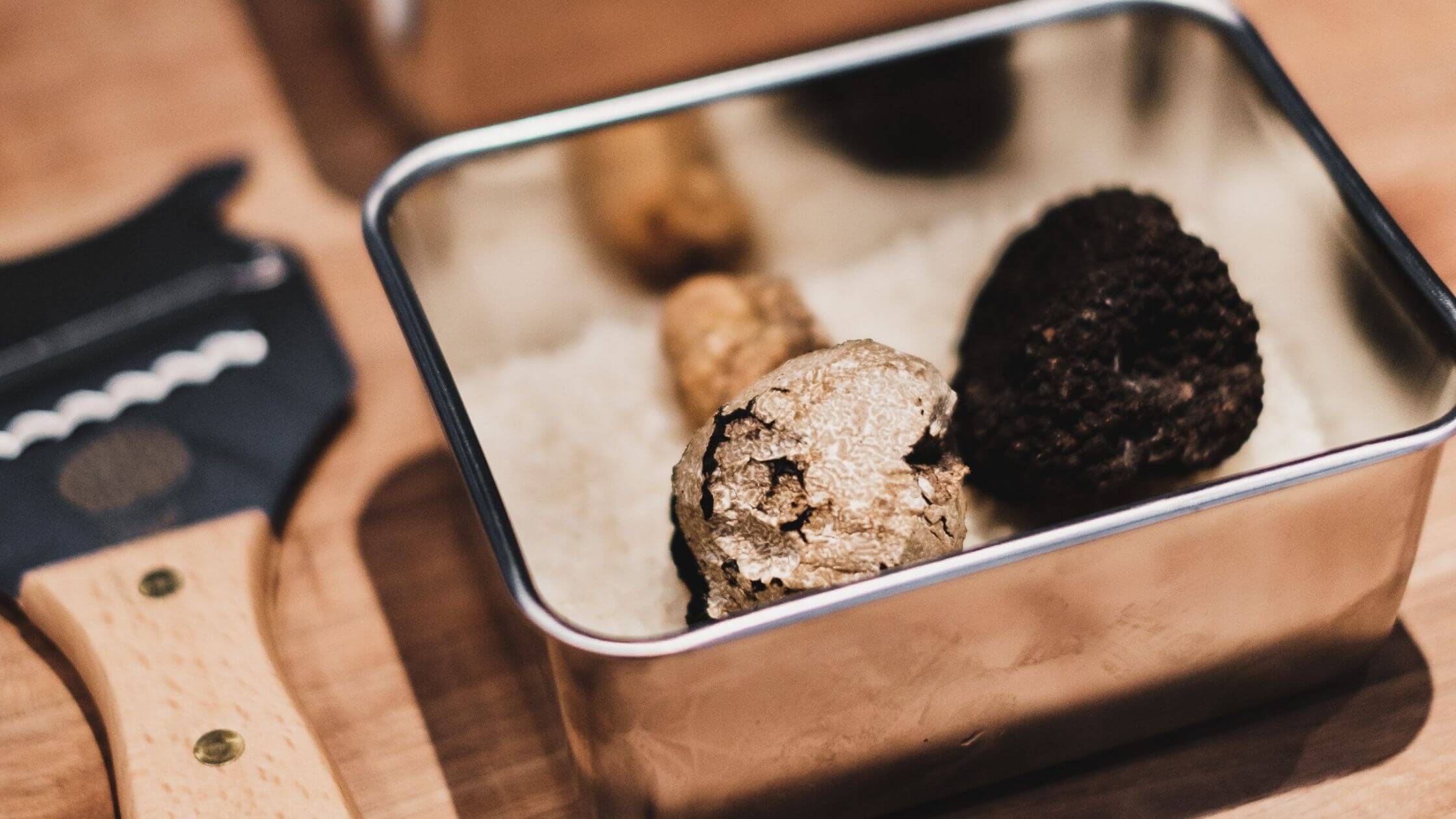
Prices of whole Istrian truffles can start at €50 for the more common autumn truffle and €200 for the rare white truffle. (Image: Pexels)
If you can, purchasing a whole truffle allows you to savor its intense, earthy aroma, when freshly shaved over dishes like pasta or eggs. You can also find truffle infused oils, cheeses, chips and even chocolate (it’s tasty!), guaranteed to please any foodie.
Olive oil
Unlike other countries in the Mediterranean such as Italy and Greece, Croatian olive oil can be difficult to find as export levels have yet to reach their counterparts. While Istria produces the largest proportion of Croatian olive oil (10%), other varieties of olives are also grown on the Dalmatian coast which produces different types of oil. So grab a bottle of these award-winning oils on your next visit here.
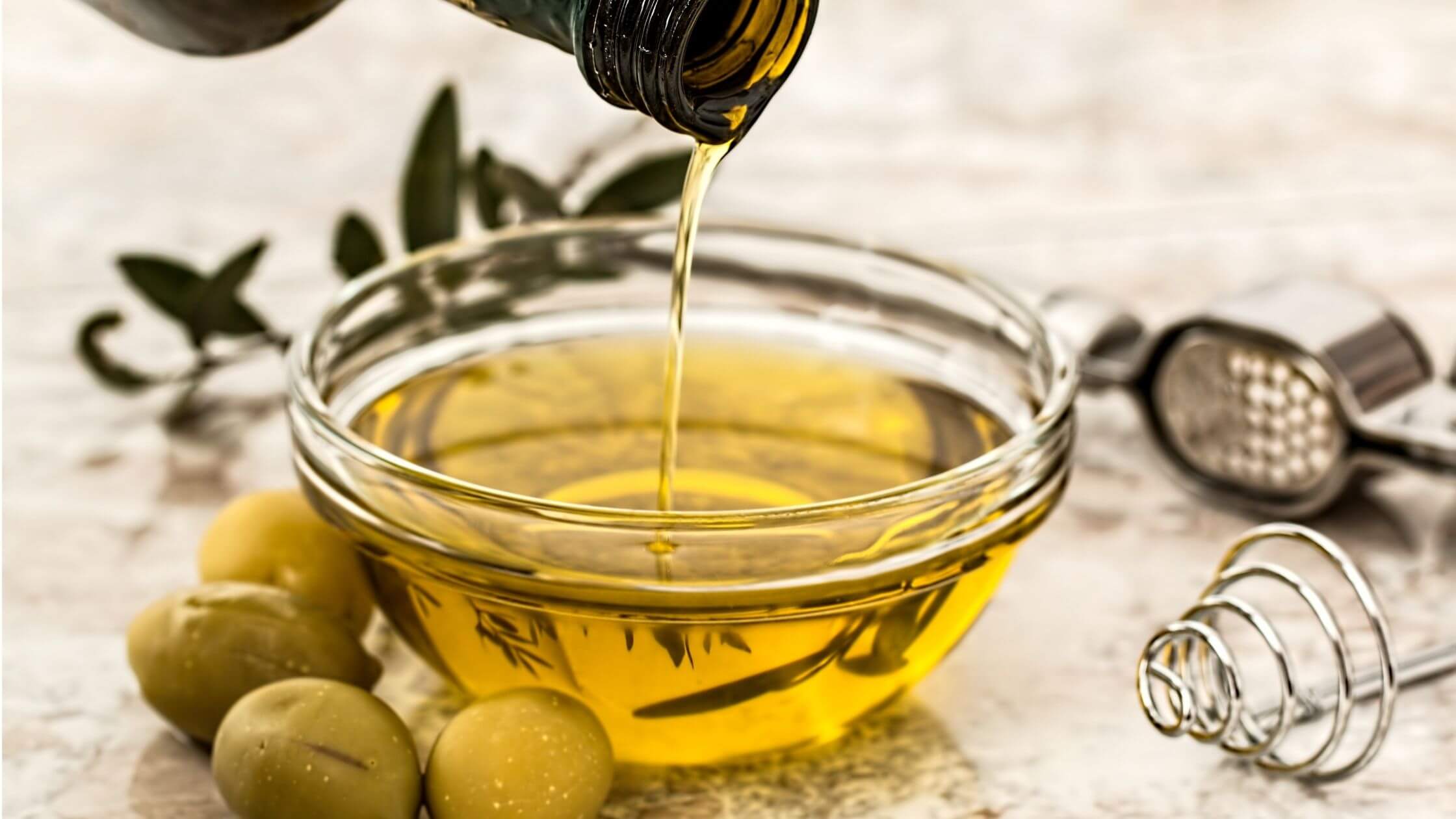
Olive oil from Istria was considered the "gold standard" of oils during Roman times. (Image: Pexels)
Wine
Like olive oil, Croatian wine can be quite difficult to find outside the country. Thankfully, this trend is slowly changing with small, independent producers competing in the global wine market, and gaining recognition for its outstanding quality.
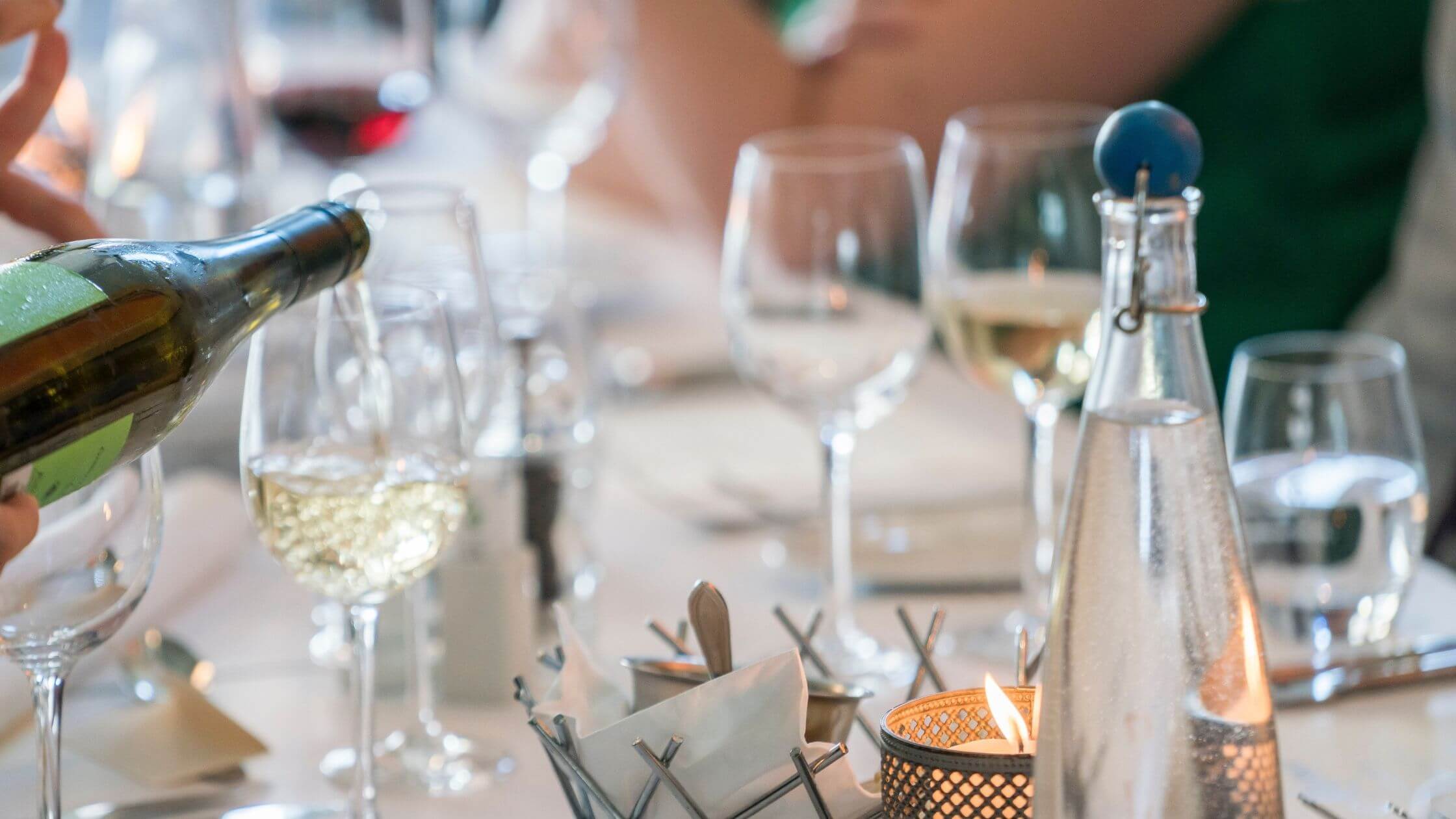
Try ordering "table wine" or "stolno vino" at Croatian restaurants, you'd be surprised how delightful they are. (Image: Pexels)
Croatian wine producers are equally adept at producing rich, fruity white wines such as Graševina, Pošip, and Malvazija, and luscious reds like Teran, Plavac Mali, and Zinfandel. Regardless of your preference, buy a bottle or two for your next dinner party back home.
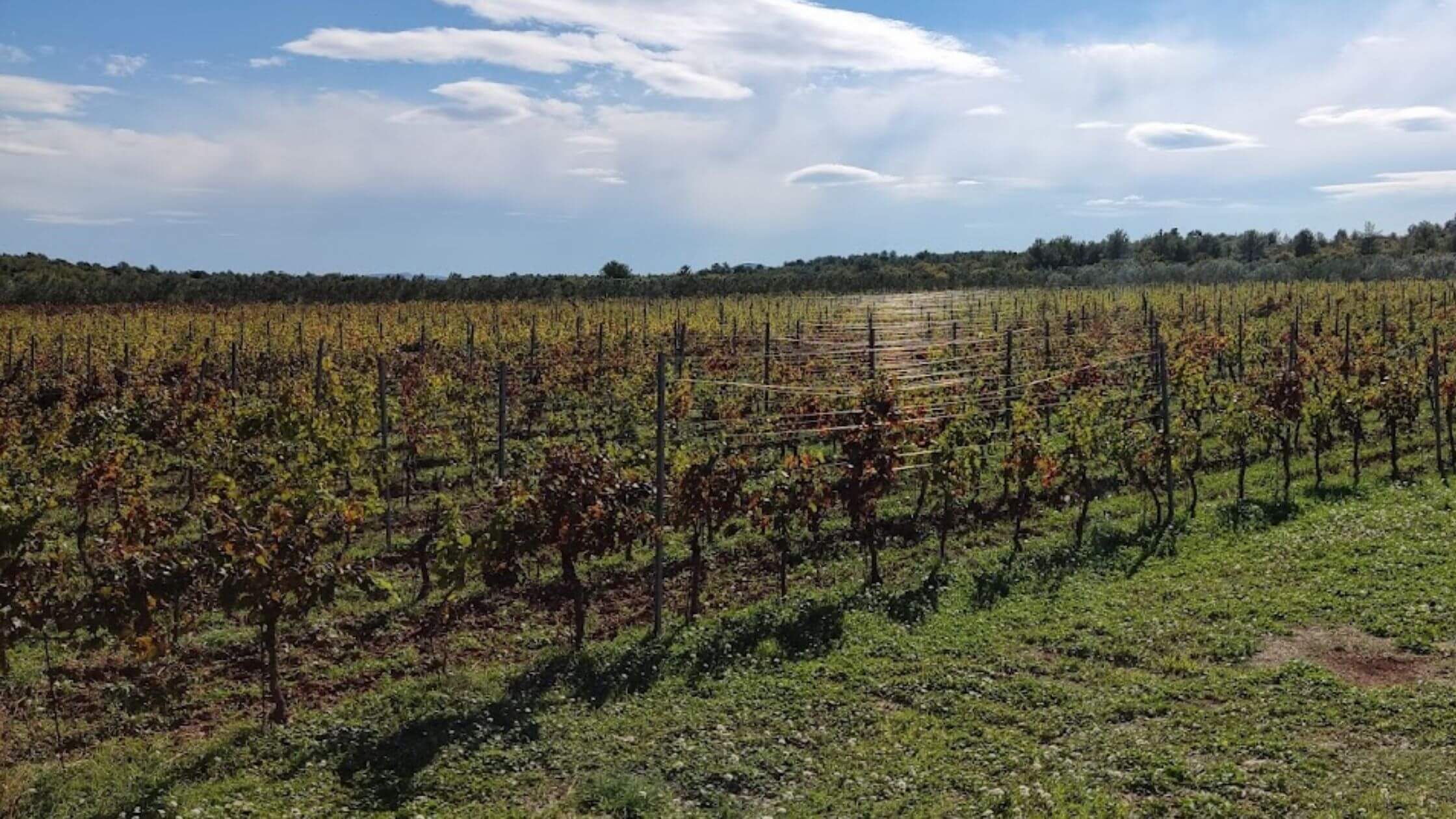
(Croatian vineyard along the Dalmatian coast. Image: Author's own)
Preserved fruit
Whether it’s at the store or the local market, you’ll always be able to find preserved fruit either whole or in jams, on sale throughout the year in Croatia. Popular local jam flavors include fig (a personal favorite), plum, cherry, and tangerine.

Homemade jam at a farmer's market. (Image: Pexels)
Alternatively, dried fruit and fruit peels also make delicious gifts. In the South of Croatia, you can often find packets of candied orange (arancini) and lemon (limuncini) peels, alongside dried fruits such as figs and apricots. Ideal as a snack on its own or added to baked goods.
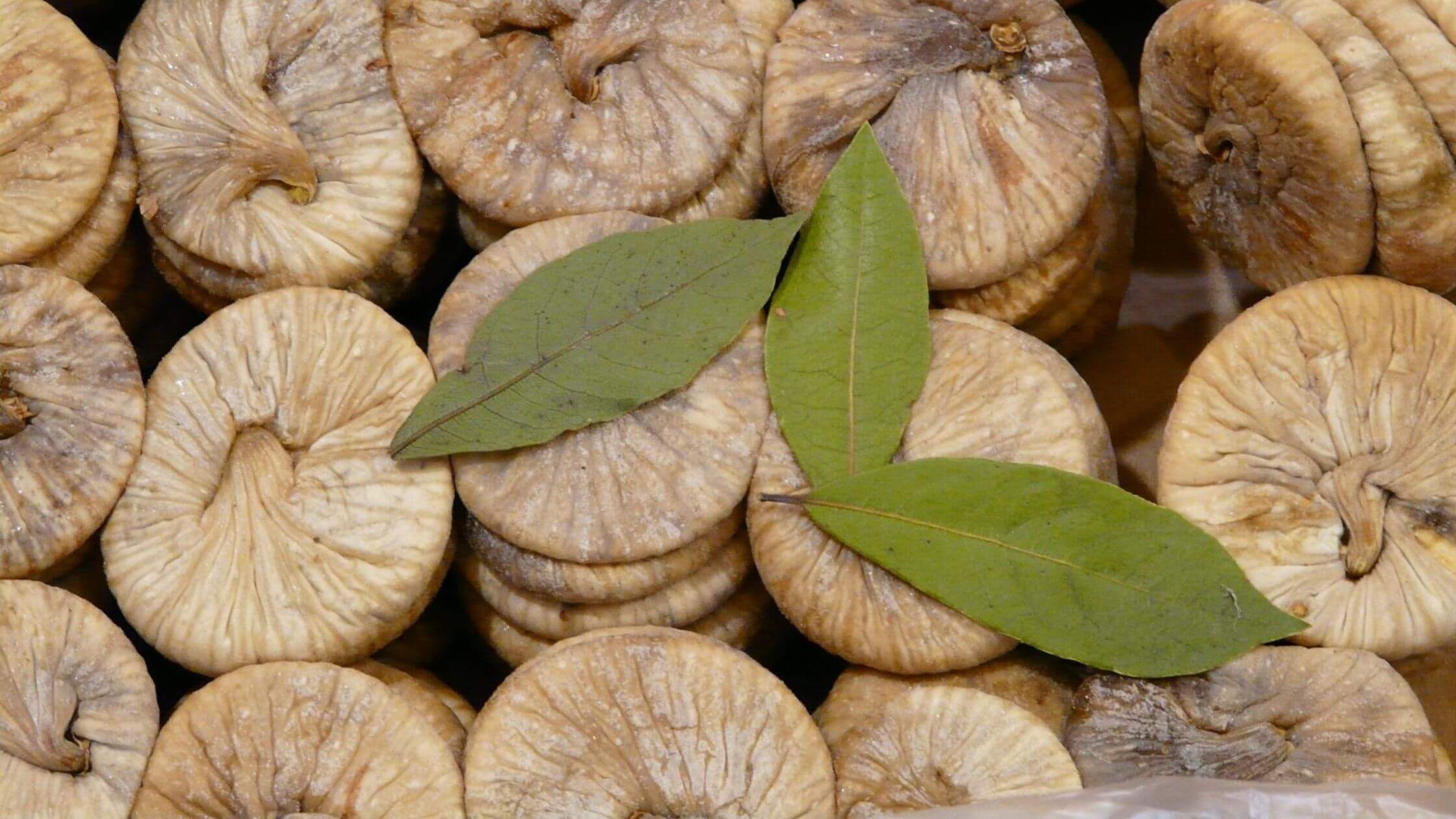
Dried figs are the perfect snack. (Image: Pexels)
Cravat
Once known as the Croat, the Cravat is the precursor to the modern-day tie and in fact, originates from these very shores. Historically, it was worn by Croatian soldiers to identify themselves due to the lack of military uniforms during the Thirty Years’ War (1618-1648). Its proliferation beyond the battlefield occurred when French soldiers took a liking to the rudimentary neckties worn by a regiment of Croatian troops stationed in France.
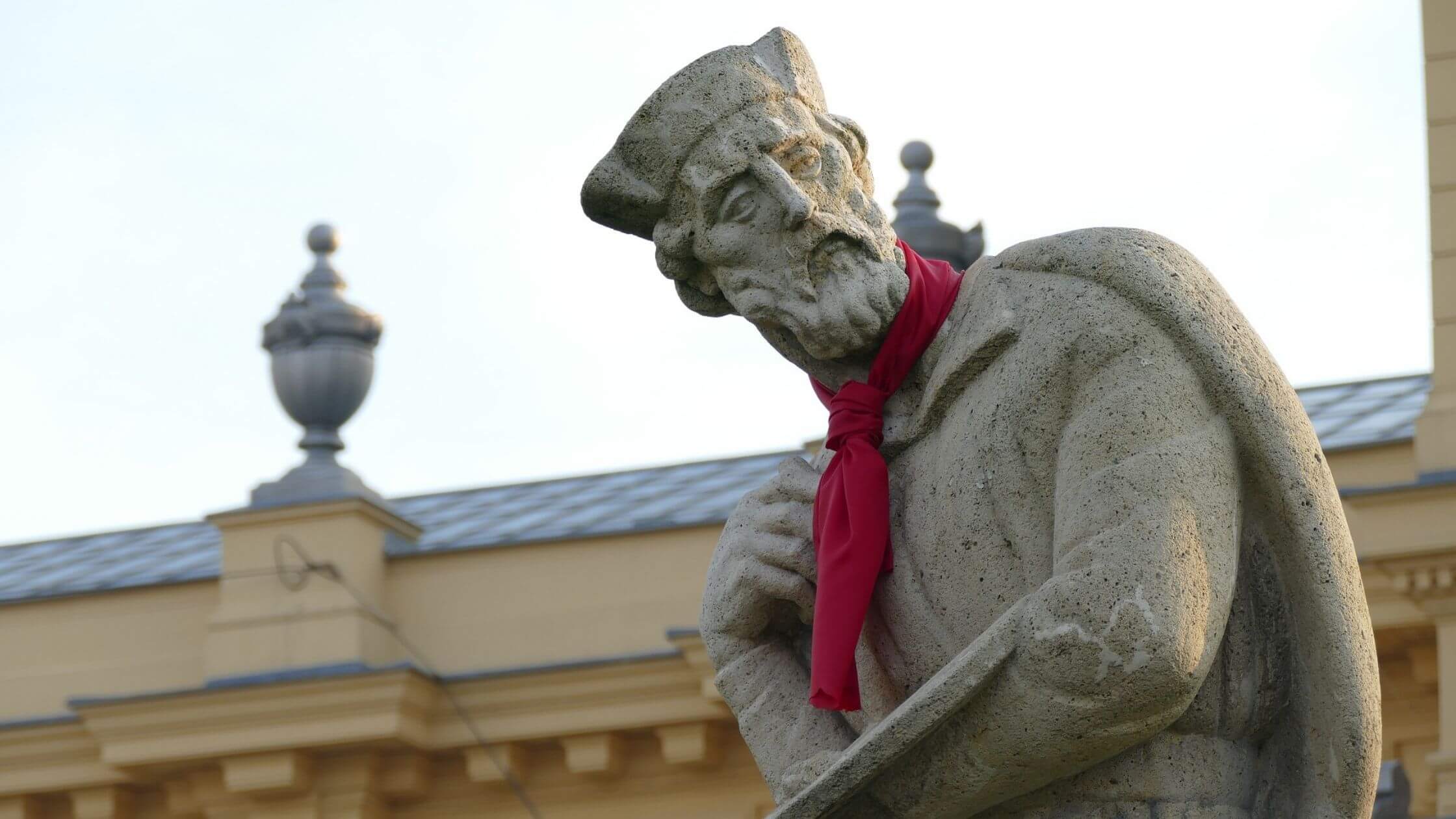
October 18 is Cravat Day, with the red cravat being the most traditional color. (Image: Pexels)
It wasn’t long before the trend spread throughout Europe and even took hold in America where the style is known as the ‘Ascot’.
Croatian lace products
Lacemaking has been a Croatian tradition dating back to the Renaissance (14th - 17th century). Since 2009, Croatian lace craft has been recognized as a UNESCO Intangible Cultural Heritage.
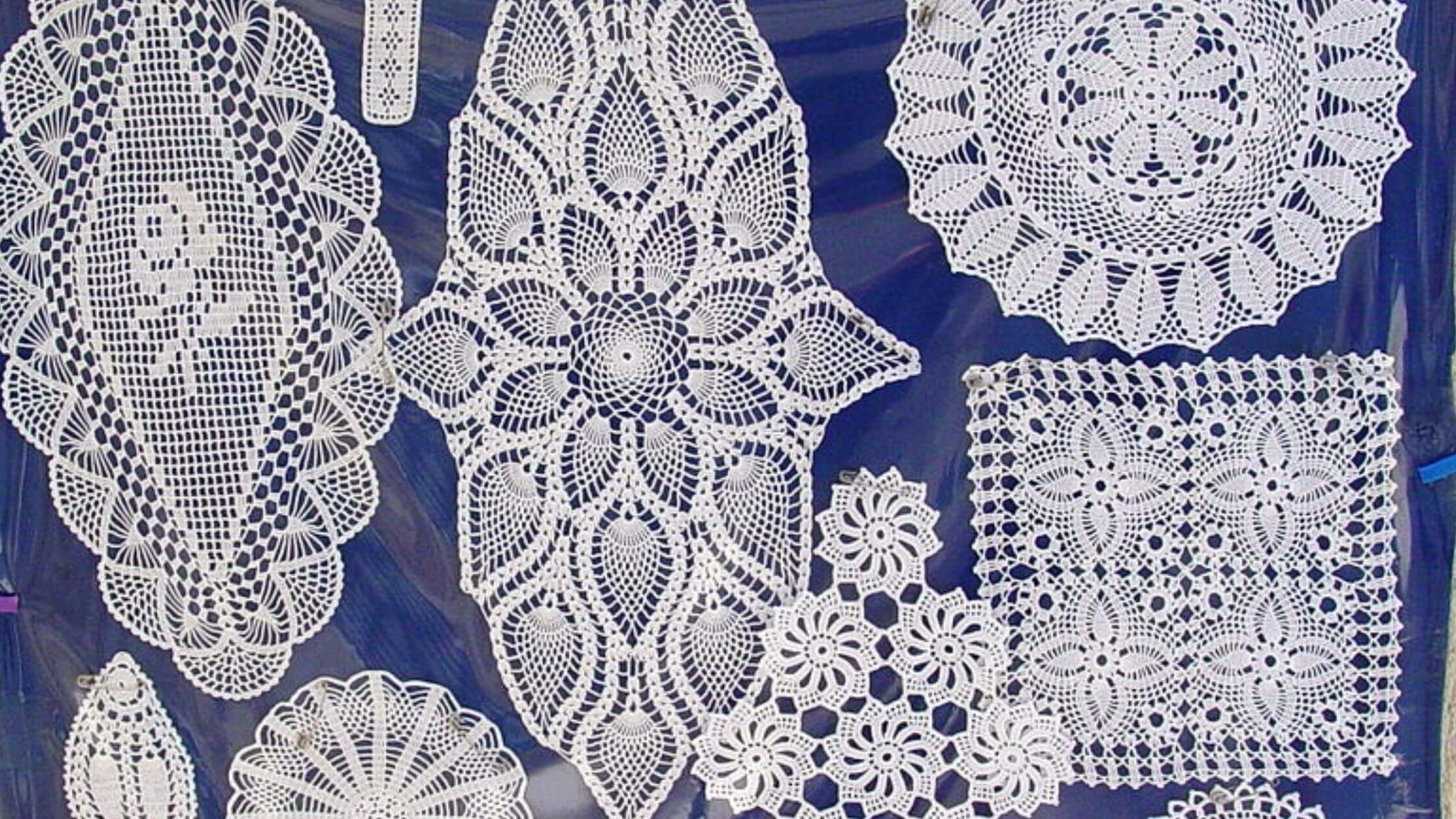
Delicate Pag lace doilies. (Image: Adam Jones adamjones.freeservers.com)
Three distinct traditions of lacemaking are still alive today, in the towns of Pag, Lepoglava, and Hvar, each with its own unique patterns and production methods. To purchase some of these keepsakes, lookout for gift stores or specialty shops selling lace tea cloths, place mats, or ornaments.
Rakija
Rakija is a fruit brandy considered the national drink of Slavic people across Croatia, Bosnia and Herzegovina, Bulgaria, Montenegro, Macedonia, and Serbia. Rakija has an alcohol content between 40-50% but can go up to 60% with a double distilling method that produces Prepečenica.
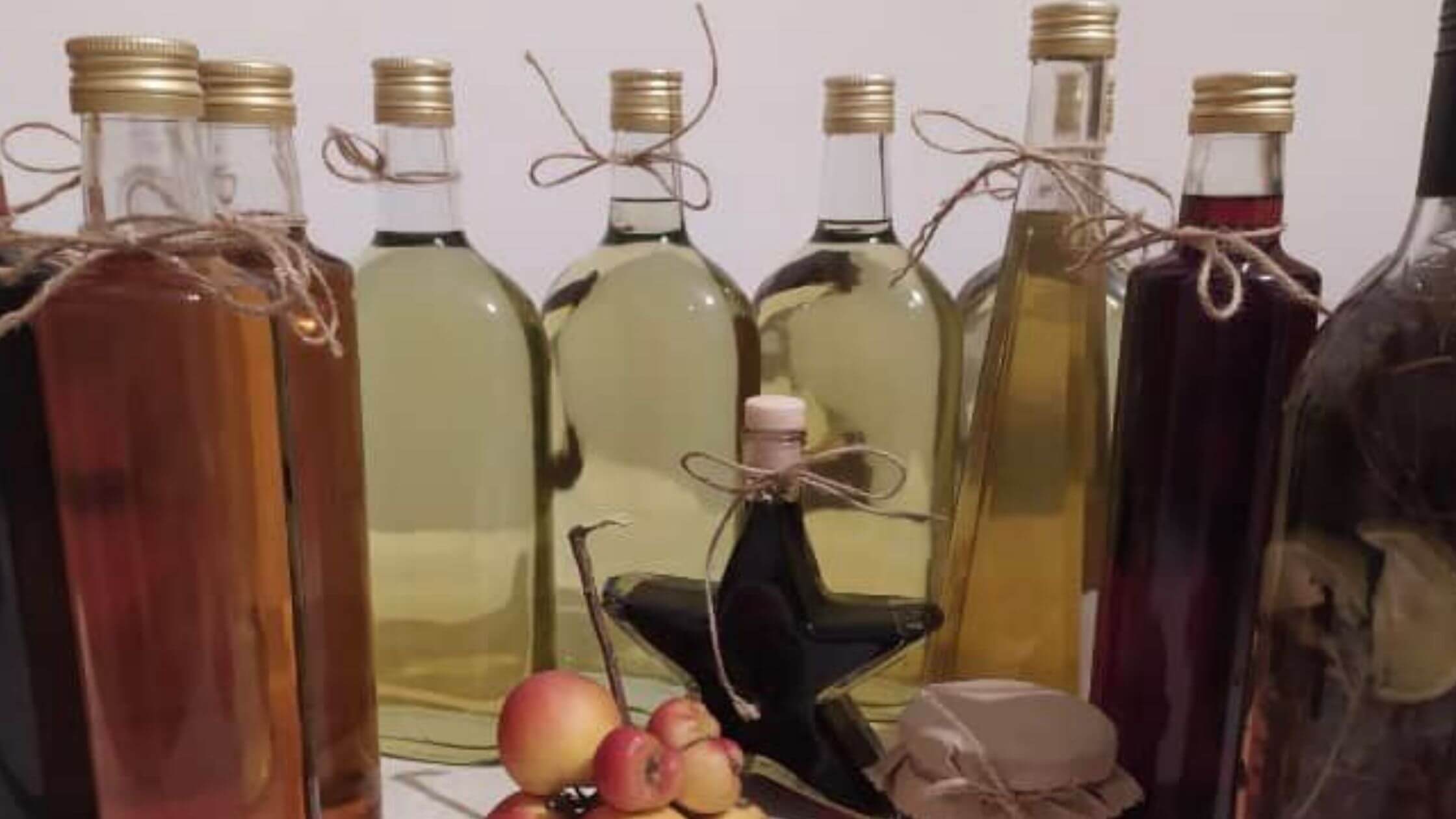
Different types of rakija distilled from different fruits. (Image: OPG Jukica/Facebook screenshot)
The most popular flavor in Croatia is plum, but rakija is also distilled from apricot, grapes, apples, pears, and quince. You can also find rakija infused with various herbs and spices such as juniper and carob for added complexity.
Gingerbread
Another Croatian craft on UNESCO’s Intangible Cultural Heritage List is gingerbread making. Gingerbread craft ship is common in the Northern areas of Croatia and remains a part of local festivities, events, and gatherings. Each craftsperson has their own unique way of decorating gingerbread, often icing each piece with names, verses, messages, or pictures.
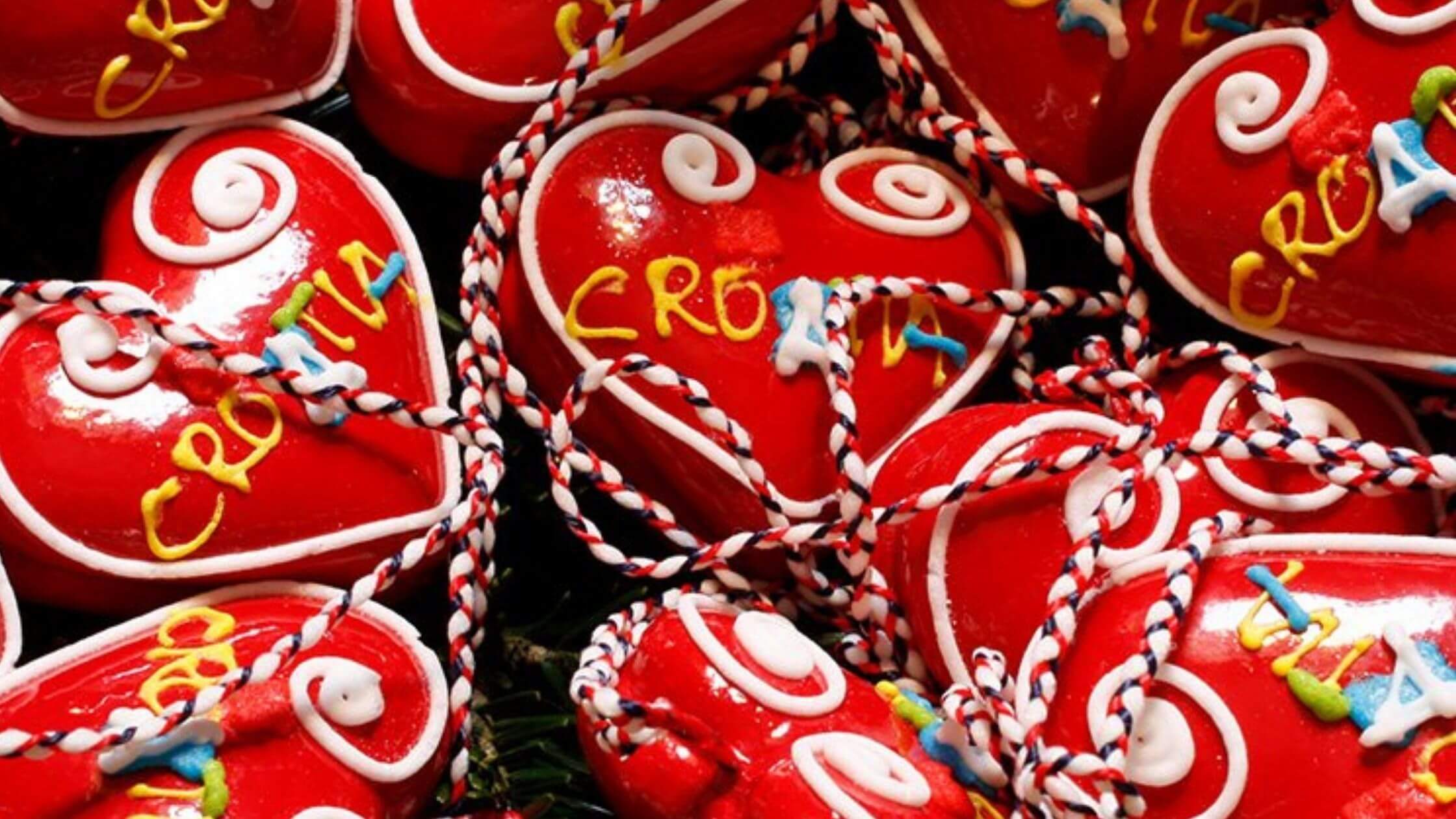
Lucitar hearts ornaments in Zagreb. (Image: Croatia Full of Life/Twitter screenshot)
In Zagreb, the gingerbread heart (Licitar heart) is the most common motif. You can find stores that offer personalization services, making them ideal Croatian souvenirs or gifts for loved ones.
Salt
Salt pans in the towns of Ston, Pag, and Nin have been in use as far back as Roman times, producing some of the finest sea salt in the world thanks to their ideal geographical positioning. Salt is produced from April to October, with each production cycle lasting 1-2 months. Ston Saltworks, the oldest salt production facility in Europe, can produce 500 tons of salt annually from just 9 crystallization pools.
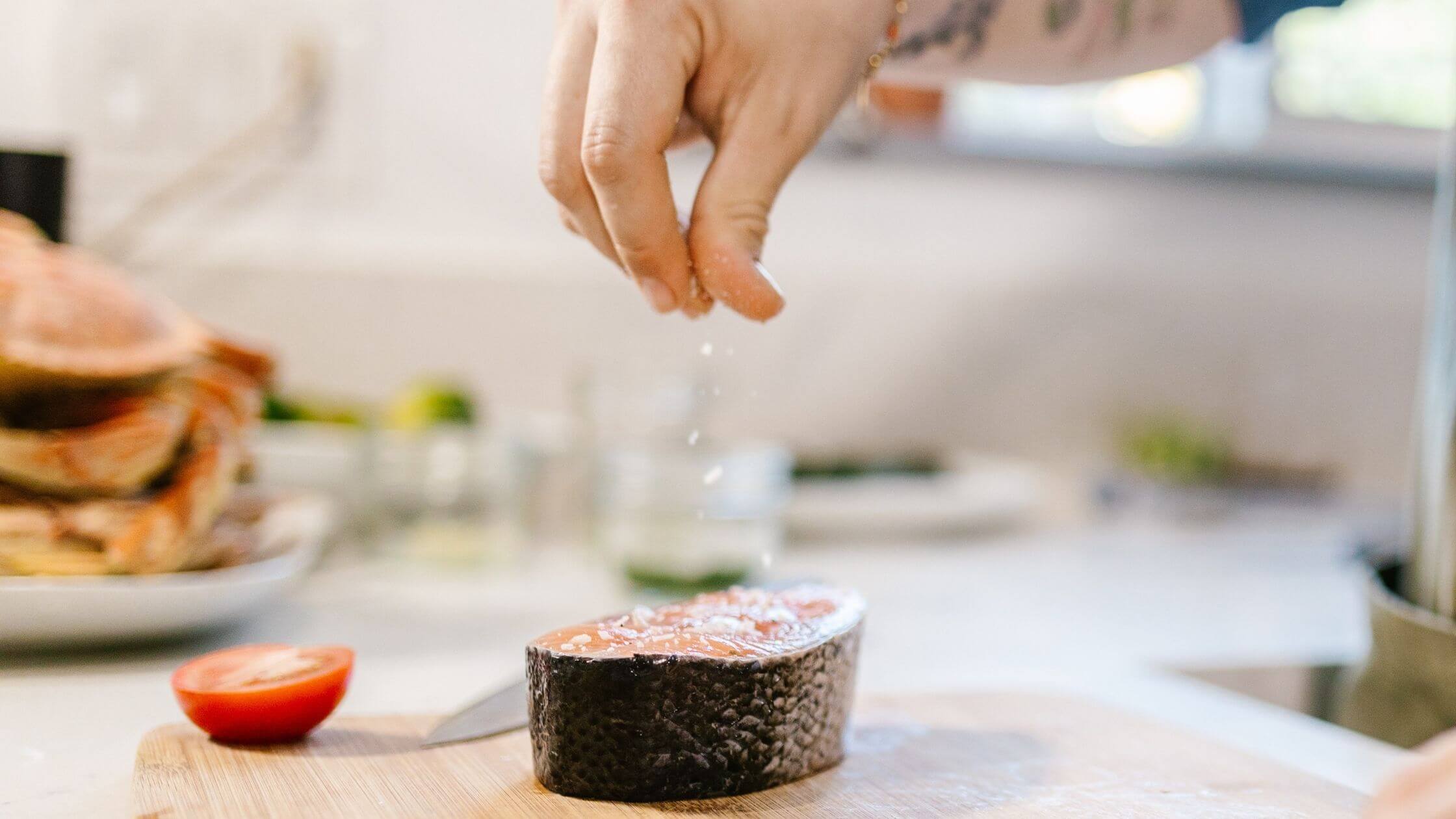
Crunchy flakes of Croatian salt make a great addition to any kitchen. (Image: Pexels)
Considering its affordability and prevalence of salt in everyday meals, consider picking up a bag of local salt the next time you pass through.
For more, check out our lifestyle section.
Jelsa Wine Festival Returns After Last Year's Break
August 26, 2021 - After a year-long hiatus from the pandemic, one of the most popular and traditional events in the town of Jelsa on the island of Hvar marks its long-awaited return. The Jelsa wine festival starts tomorrow and includes sports, cultural activities, a great gastronomic offer, and of course, the best from its wineries.
As written by Turističke Priče, the first Jelsa wine festival was held back in 1952 on the initiative of the community of the Cooperative Association of Jelsa called the District Cooperative Meeting. In 1954, Cooperative Day was held, and since 1956, this event has been called the Wine Fair or Cooperative Rally. The Wine Fair in 1966 was held on August 14 and that day was declared the Day of Tourism in Jelsa. The festival has been held for years in the first half of August, from Friday to Sunday. The crowd would start in the morning and last until dawn the next day. Huge quantities of wine were poured because the idea was to free the taverns by selling old wine for the new one that will come with the upcoming harvest.
This year's Wine Festival is held on August 27 and 28 and in recent years this event has returned to its original purpose: to be a cheerful event to promote Hvar wines, especially the best in the Jelsa ring, a wine-growing region where we find many original varieties of islands such as Bogdanusa, prča, plavac mali, but also the popular international cabernet sauvignon, merlot, and syrah, and thus various wines, from white and red, rosé, to the popular opol and prosecco.
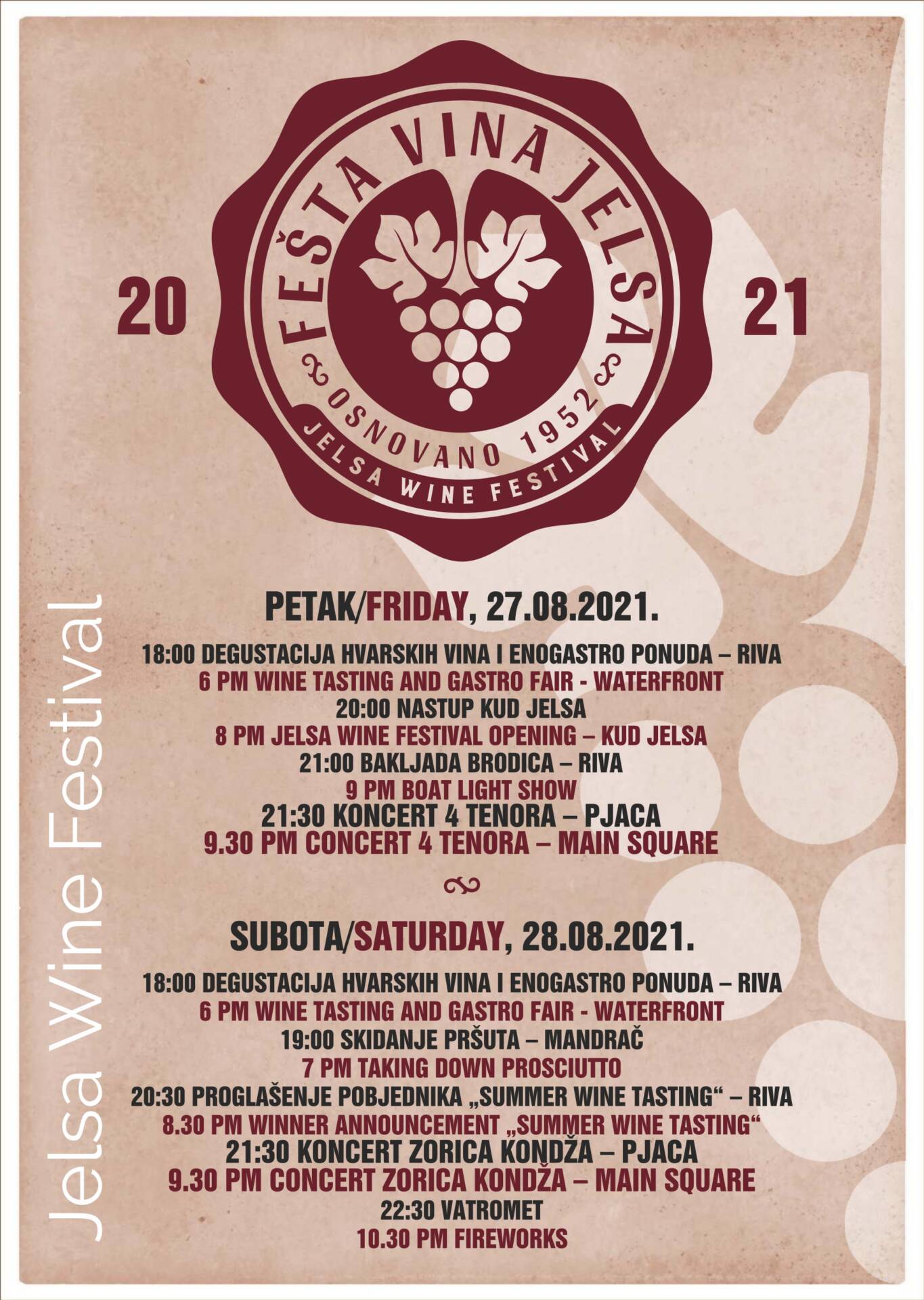
Jelsa Wine Festival
For the last thirty years, these wines have stood out for their quality, won prizes in competitions, and delighted guests for whom the Wine Festival is a real opportunity to taste and feel the differences between wines from the southern slopes of the island, positions from Jelsa slopes and valleys and fields by the sea. The wine festival is an experience that tourists remember - the sun and the sea have long been the only assets of the island, but also tradition, wine, gastronomy, Dalmatian songs... the spirit of the Mediterranean as it once was.
Various sports and entertainment competitions have been announced: water polo matches are played in the port, rowing competitions are held, international regattas as well, and prosciutto is removed from the top of a ten-meter-high mast. Everything is, of course, spiced with a gastronomic offer and accompanied by concerts. This year, Four Tenors and Zorica Kondža are in charge of good music.
For the third year in a row, in cooperation with the Hvar Winemakers Association and the Wine Stars project, a Summer Wine tasting by Wine Stars is held as part of the Jelsa Wine Festival, with an emphasis on original varieties and what makes them different from other wine regions. Book the last weekend in August for Jelsa where the hosts invite you and guarantee good fun. This year's program will be conducted in accordance with current epidemiological measures and the entire program can be found at this LINK.
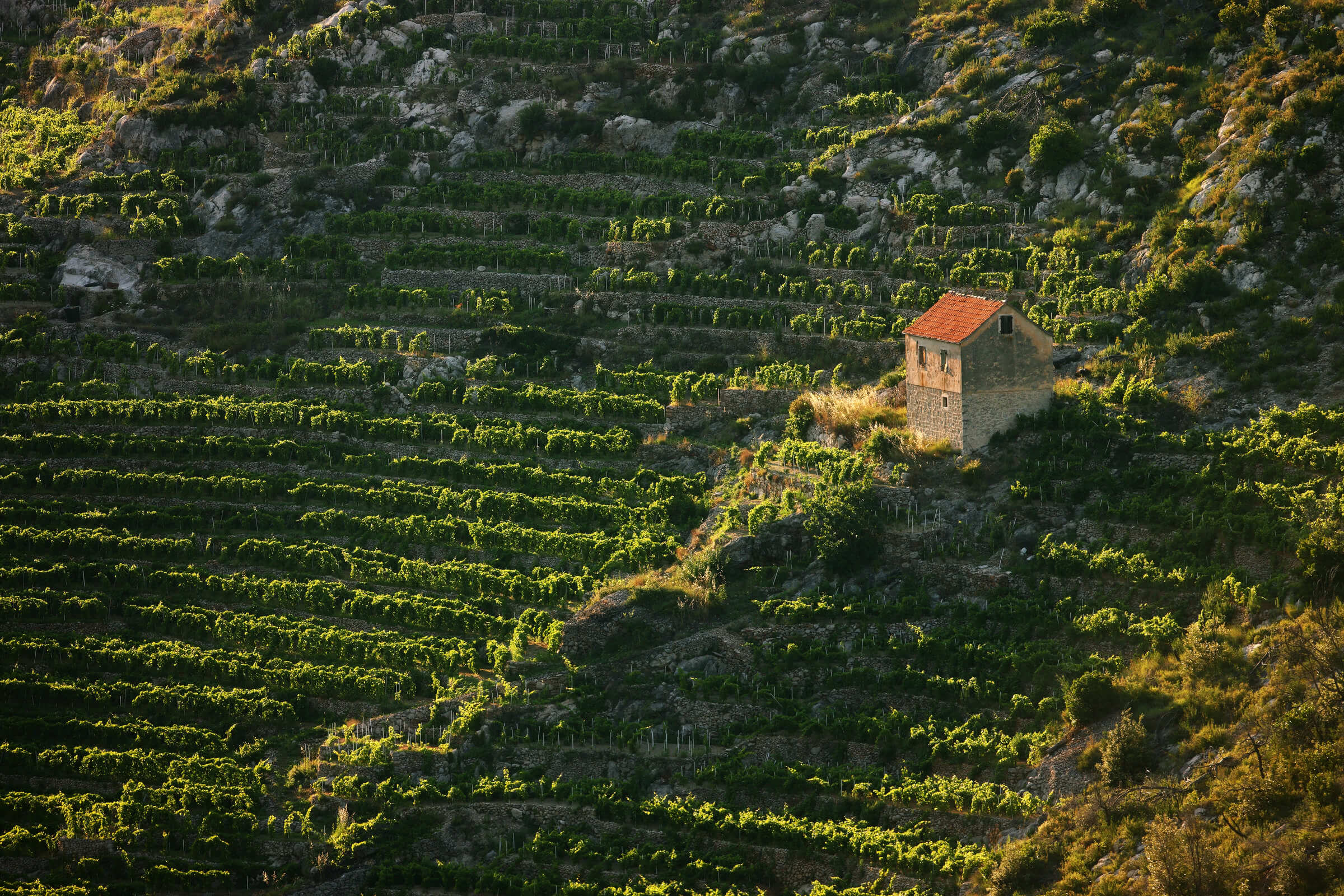
Vineyard on the hills of Jelsa (Photo: Mario Romulić)
After the wine festival, when you are in Jelsa, be sure to look up and discover the starry sky. Apart from the sun and the sea and top wines, Jelsa also offers tourists a starry sky, and the stars are disappearing in modern times precisely because of light pollution, and observing the starry sky is becoming a tourist attraction that you cannot often see.
The stars will be the brightest tourist product of Jelsa, which should acquire the status of the International Dark-Sky Community by the end of the year and become the first municipality/city in Croatia to proudly bear that title. This title confirms Jelsa as a destination that has an exceptional quality of the night sky and respects high environmental standards in terms of light pollution, which together make a big step towards creating an astro-tourist offer in the area of Jelsa.
Croatian wines and grapes are among the best in the world, and you can find more information about them in Total Croatia’s Guide to Croatian Wine HERE. Now in your language!
Jelsa is a slice of safe, authentic lifestyle heaven on Croatia’s premier island, with wine and beach treasures galore. Everything you need to know about Jelsa, you'll find it in our Total Croatia's Jelsa on a Page HERE.
Follow the latest travel updates and COVID-19 news from Croatia HERE.
For more on travel in Croatia, follow TCN's dedicated page.
Quarantine Escape or Something More: How French Youth Live In Croatia
26 June 2021 - One TCN intern interviewed four young French people who recently moved to Croatia about their everyday life, impressions, and preferences here. A look at how French youth live in Croatia.
They came to Croatia for different volunteering projects regardless of coronavirus pandemic, but likely would recommend their new abode to fellow countrymen as a good place to survive quarantine. The luckiest of them Mathias (26) got a chance to arrive in Split in February 2020, Axelle (22), and Clemence (22) joined him nearly a year later. Mathilde (23) came to Zagreb sometime between this period, in September 2020.
Is the weather similar to Nice?
The climate is continental – low temperatures in winter and high temperatures in summer. “In Zagreb, there is often a fog during the winter,” Mathilde shares. Thick fog looks unusual for newcomers and from time to time creates true ‘Silent hill’ views in Zagreb country. “It’s not windy, but you don’t see the light of the sun during two months,” she continues.
On the contrary, Split is a windy city, however, even during the winter the sun shines a lot. There are winds in France, Mathias notes. He fails to find a French analog to the well-known Split ‘bura’, a cold north-west wind that long till 10 days in winter. But there is ‘mistral’ wind in France, similar in the name and effects to Croatian ‘maestral’ that comes to Split from the north-east in summer.
If you’re sensitive to weather, you’ll probably feel winter winds in Split. Summer winds will help you. The wind cools the atmosphere, thus summer heat is handled easier in the Dalmatia. Axelle and Clemence who came to Split for spring and summer characterize the weather solely as perfect. Both moved from the northern part of France and began to enjoy sunbathing here. Mathias compares the climate in Split with Nice. “Similar in many senses… Apart from the landscape – there are more islands and mountains in Croatia,” he said.
Is air-con needed?
My French respondents almost don’t use air conditioning. Mostly they don’t have a need for it. Axelle actually doesn’t know whether there is any air conditioner in their office. The office is situated on the first floor, it’s cool there. As for apartments it’s normally equipped with air conditioning systems. However, girls in Split are satisfied by shade from the inner yard of their house. During the summer, they just open windows wondering for what purpose these double shutters are designed. They’ve never met such a design in France. Mathilde doesn’t use the air conditioners for ecological reasons. It pollutes the atmosphere a lot.
Why do you apricot jam in a croissant?
Young people are usually simpler with food. Two of them are vegetarians, but they easily adapted to Croatia. “In France, we consume a lot of cheese,” Axelle claims. You can buy some basic cheese here like Emmental, you can buy soft cheese like mozzarella and feta. Mathias who isn’t a vegetarian, but a foodie confirms that fact. “There is a huge lack of French cheese .” You’ll survive, but you’ll miss cheese. “I need cheese in my life,” Axelle says and goes to buy it without looking at brands.
On the plus side, there are many fresh vegetables in Croatia. Mathilde enjoys visiting open markets – you can talk, practice Croatian, create links with people, and support local producers. And prices are cheaper than in the supermarket. Furthermore, the open market challenges your traditional tastes. While as in supermarket you’re guided by familiar names on the shelves, open market encourages you to improvise and try something new. Clemence started to eat much more vegetables in Croatia. Mathias who also visited the fish market has enriched his nutrition with seafood.
Food prices in Croatia are lower than in France. However, moving here you should configure your expectations correctly. Prices are lower, but not really low. And, of course, this isn’t about imported items. As a result, Clemence eats less ‘Nutella’ here. Hopefully, it was not a huge loss. Mathilde praises Croatian pastries, whereas she loved French pastries as well. ‘Burek’ is a universal pleasure; it has vegetarian options with cheese or spinach. ‘Burkifla’ or ‘strudla’ are a nice choice for the sweet tooth. The only stuff you should be careful with is a croissant. In Croatian bakeries, they often offer croissants with apricot jam (‘marelica’) and French often describe its taste as disgusting. Just clarify on a cashier that you want a normal croissant!
Wine is wine, if you do it in France, you’ll probably die!
Apart from croissants with apricot jam, one more strange thing the French can occasionally order in a cafe is coffee with cold milk. It’s better to specify what kind of milk you want – hot or cold, because during the summer season Croatian cafes often serve coffee with cold milk as in southern Europe. Axelle came from northern France and never expected to have something hot ordering a coffee. Otherwise, typical for the Balkan region ‘Turkish coffee’ is rarely found in modern Croatia. Expats including my respondents from France don’t like it. “First 2-3 sips are ok, but next you feel this nasty coffee ground…”
A coffee drinking culture must be attributed to the advantages of life in Croatia. You can take one coffee and stay for 3 hours. “You can’t do it in France. If you stay more than an hour, it’s anticipated you will order one more coffee or another drink,” Axelle explains to me. And it’s not only about the economics of cafes. In France, you sit in a cafe for half an hour and then go back to your business. In Croatia, there is this chill way of life. You drink a coffee, chat, and sunbathe, and don’t hurry. Croatians consume a lot of coffee. When it’s too much for Clemence and Axelle, they switch to beer. Mathilde hates coffee, however still has a lot of Croatian friends. She drinks hot chocolate. She misses 'churros’ to hot chocolate.
Mathias spent enough time both in Split and Zagreb and would prefer Zagreb cafes and bars rather than Split ones. Such places have more variety, events, and different peoples there. Mathilde who is been living in Zagreb for almost a year doesn’t attach importance to it. She’s not a huge bar lover. She settles for ‘Antibar club 44’ where she holds her French evening with students. Axelle and Clemence also have their favorite place to drink in Split. In ‘Tri volta’ there is no crowds or fancy drinks as ‘ice coffee’ or ‘Aperol spritz’, but the location and atmosphere are great.
In public drinking beyond bars and its terraces, the biggest surprise for the French was a way of drinking wine. Croatian youth usually dilute wine. Red wine plus coke has the special name ‘bambus’. White wine is diluted by sparkling water. Both kinds of wine can be watered down. This practice has a simple explanation: diluting enhances the taste of cheap wine that youth usually buy. Also, this practice is known in Italy and Spain, but not in France. Wine is wine, Axelle claims emotionally. “If you do it in France, you’ll probably die!” Clemence echoes.
Let me pay for anything!
Nobody from my young respondents spends much money on entertainment mainly because of plenty of outdoor activities. Mathias became a true expert in hanging out with people in Split. This activity requires only being at the right place at the right time. That is late in the evening on Matejuska pier and after midnight on Ovcice beach. Girls prefer Matejuska, because the public is more varied there. Youth and locals gather on Ovcice beach. In fact, Axelle and Clemence once visited the Croatian party where they were the only foreigners. It was not bad, however, it’s certainly easier to start a conversation as the majority speaks English.
Axelle shares that she would like to visit the ‘Froggyland’ museum in Split. Till the moment she didn’t manage it. With Clemence and other friends, she also tried to go to the cinema, but finally, it was ‘sold out’. Split actually discourages finding these kinds of entertainment. When you have leisure time, go straight to the beach, read a book in the shade, relax, run along a coastal line – there are so many easy ways to enjoy in Split. Mathias concludes that museums didn’t impress him and the cinema was normal. You can watch original American or French movies with Croatian subtitles.
Mathilde has succeeded to go to the cinema about 10 times. Interested in art she visited several museums in Zagreb. She’s visited once a classical concert at the Croatian National Theater. It’s a pretty good cultural gathering, although Mathilde recognizes that she would have better if it were not for the language barrier. She doesn’t go to the cinema or museum spontaneously, only when friends invite her. A pleasant surprise is that an inviter pays. Croatians are very welcoming and open people, thus you often fall into situation “Let me pay for anything!”
Where is the name of the bus stop?
Croatian hospitality is one of the reasons to make traveling your hobby here. Mathias and Axelle recall the other reasons. Croatia is a comparatively small country, most destinations are easily reached. There are a lot of historic towns, wonderful nature places. Islands aplenty stand alone. “You go on the islands and suddenly feel like you are in another county on vacation. I like island vibes!” Axelle and Clemence visited Vis together loved the nature of the island-geopark.
Zagreb is a student city in Croatia. There are more students and more expats as well than in Split, therefore society seems more liberal and open-minded. Varazdin looks like a typical Central European town. Pula is pretty boring during the winter, but nice in summer, Mathias lists his travel within the country. “I’m not a fan of Slavonia. This is not a region for tourists, except Vukovar, maybe, for those who are interested in history. It’s good to visit when you live in Croatia for a long time,” he says.
Split is a very special story. Mathilde surprises by its closeness to mountains and sea. French who constantly live in Split loves it for a combination of historical heritage and daily dynamic life. “Diocletian’s palace is a miracle, Clemence tells. I like to go for a walk there. And now after many walks, I can say that I really know it.” Axelle stresses one more advantage: “A lot of sights are situated next to Split – Solin, Klis fortress, etc.” Omis, a tiny city with rocks is suited for hiking, meanwhile, there are enough hiking places just by the way from Split to Omis.
In regards to transport within the country Mathias’s used to prefer trains in France. A train as a comfortable and ecological means almost doesn’t exist in Croatia. It’s a disadvantage. But my French respondents quickly learned how to deal with buses. They usually travel by bus. The fact that bus stops in Croatia have no names was a little challenging for the first time. Axelle remembers how she was checking her way on Google maps. “It just takes some getting used to. In France each stop has a name.”
Could you, please, write down the name of this movie in Croatian for me?
“I don’t see any difference in culture between France and Croatia,” Mathilde states. The point is that the French consider ‘culture’ as a broad concept, barely the same that ‘civilization’, i.e. Croatia relates to the same European Christian civilization as France. Looking in-depth Croatian culture is not well-known in France.
Axelle purposely read about Croatia before coming here to have basic grounding. After 4 months in Split she knows, for example, Split raised pop-diva Severina. Clemence listens to rapper Nucci. Although he’s from Serbia, his music can be related to the ‘Balkan turbo-folk genre. They would like to know more popular songs, movies. etc. Croatians are glad to recommend some good stuff, but a problem is that they pronounce names in Croatian, and it’s difficult to catch and to remember too.
'Pomalo’
My respondents note the obvious visual difference – there are only white people on the streets. Society is more homogeneous. Dress is more homogeneous as well – no brassy, no sexy. “Don’t distinguish yourself,” the Zagreb expat concludes. Otherwise, Mathias and Clemence report that in Split people care about appearances much more, than in cities of France. Clemence is used to seeing fancy girls with big sunglasses and other attributes in Split every day. “Even on Monday morning… Once I was walking down the street in my probably worse-than-usual, after-party look. These girls looked at me really oddly…” she remembers.
Streets are cleaner in Croatia. It’s clean in France, Axelle stands up, but you can see some trash from time to time. Croatians are not taught since childhood to sort the garbage, to recycle as much as it’s done in France. “From the first glance they seem less informed, but in real life they’re more concerned,” Clemence shares her observations. Streets are safer too. “I feel really safe here. I have no fear,” French girls from Zagreb and Split agree in this. In France, you’d better go in a group of 2-3 girls together at night. And anyway somebody will impose a conversation, follow you. In Croatia, you can calmly be alone on a street at any time.
In memory of their blissful stay in Split two of my respondents and one more French girl did tattoos with the Croatian word ‘pomalo’. It’s literally translated as ‘slowly’, ‘quietly’, ‘little by little’. “Our tattoos mean more than literal sense. I mean more when I say ‘pomalo’ Clemence explains. ‘Pomalo’ commonly used to describe a Dalmatian/ Croatian mentality in one word: ‘take it easy’, ‘don’t rush’, ‘with pleasure’, ‘relax’, ‘hello’, etc.
For more, follow our dedicated lifestyle section.
12th World of Malvasia: International Evaluation for Vinistra
April 24, 2021 - The best overture for Vinistra is the international evaluation of the World of Malvasia, which took place for the 12th time, in the Parentium Plava Laguna hotel in Poreč, which from year to year breaks records in terms of quality and number of samples. Thus, 435 samples of wine and spirits arrived for this year's evaluation, of which 220 samples were Malvasia.
As hrturizam.hr reports, a new name on the wine scene, Denis Bernobić from Markovac near Višnjan, won the championship title in the category of fresh Malvasia. Competing with three other top Malvasias, his wine took the win. This is also the biggest surprise at evaluating wine and spirits and the 12th World of Malvasia, which was traditionally held in mid-April at the Parentium Plava Laguna Hotel in Poreč.
"The lineage has always been the foundation of the existence of us Istrians. My family has been in winemaking for four generations, but the focus has been on top-quality wines for the last few years. The championship title is a great success, I must admit a surprise, but also recognition and encouragement to continue in the same direction", said Denis Bernobić.
Malvasia Collina from the 2016 winery Cattunar from Nova Vas near Brtonigla is the champion in the category of mature Malvasia; Teran Barbarossa, Vina Tomaz from Motovun, won the championship title in the fresh Teran category; while in the mature category, that title went to the wine of Santa Lucia from 2018. Kozlović Winery from Momjan.
In the category of mature refoška, the champion is Capo d’Istria from 2013, Slovenian Vinakoper, and five big gold medals were awarded to wines that won more than 92 points. These are the 2015 San Salvatore Muscat White Benvenuti wines from Caldir; Muscat yellow from 2019. Capo wine from Fernetić; Malvasia volcanica from 1956 by Spanish manufacturer El Grifo Canari; Merlot from 2017 Siljan wines from Krnica, and Aura biska extra from 2021 from the Buzet distillery Aura also won big gold.
"We are extremely pleased that we have managed to organize such a demanding competition in these unusual times. I am pleased with the top quality of the champion wines and the fact that as many as five wines crossed the threshold of 92 points and won great gold", said Nikola Benvenuti in front of Vinistra.
Another 139 gold and 16 silver medals were awarded, while other manufacturers received diplomas. This year, the right to the IQ label - Istrian quality was exercised by 24 winemakers for Malvasia and seven winemakers for Teran.
The IQ - Istrian quality label is primarily intended to label high-quality wines produced from Istrian and Teran Malvasia grapes and encourage the development of production of these indigenous wines, raising the level of their quality production technologies and promotion and sales on the domestic and world markets. The IQ mark enables the consumer to recognize those Istrian wines whose quality is higher than the quality prescribed by the law for quality wines with the geographical origin and higher than what the customer usually requires and expects.
This is a unique, active wine control system in Croatia where winemakers themselves gradually raise the scoring threshold for wines bearing the IQ - Istrian Quality label to standardize and increase product quality. The IQ label guarantees an active quality control system that takes place on four levels: in the vineyard (yield control), in the cellar (vinification control), chemical analysis, and organoleptic evaluation, and after the label is awarded, market control is performed.
This is precisely how the quality of the wine region is strategically raised and branded. It is important to emphasize that the Association of Winemakers and Winegrowers of Istria was founded in 1994. Therefore, it is a continuous process and strategic goal of raising Istrian wines and branding Istria as a wine region.
Great results and championship titles are the best announcement of the 27th Vinistra, which is being held in the open air for the first time this year, in the Peškera bay in Poreč. Although it was initially announced that the 27th in a row Vinistra will be held from 7 to 9 May in Poreč, due to the epidemiological situation throughout Croatia, the organizers announced that they are changing the date and place of the event.
The exact date is not yet known. For now, the focus is on June. The organizers of Vinistra are optimistic and do not give up on organizing this year's Vinistra.
To find out more about Croatian Wine, click HERE.
27th Vinistra Wine Manifestation Comes Back to Poreč in May 2021
March 2, 2021 – Good news for all wine lovers, experts, and winemakers, as the 27th Vinistra wine manifestation will take place from 7 to 9 May 2021 in Poreč, together with its traditional overture, 12th International Evaluation "World of Malvasia."
If there are no surprises and if the epidemiological measures allow it, the 27th Vinistra wine manifestation will be held this year after a one-year break due to the coronavirus pandemic. The preparations are underway, and this year's organizers have a somewhat more difficult task because everything should follow the Headquarters' measures and recommendations.
"As we did not hold the traditional En Primeur in Zagreb this year due to epidemiological measures, Vinistra will be an excellent opportunity to present new vintage wines, excellent in all characteristics, especially for red varieties. For us winemakers, the only positive side of 2020 was the exceptional harvest. The last two years have hit the wine and tourism sector hard, so we are very much looking forward to this year's event, meeting our partners, customers, and lovers of Istrian wines," said Nikola Benvenuti, president of Vinistra, winemakers' association, and winegrower.
He adds that the location and accompanying program will depend on epidemiological measures.
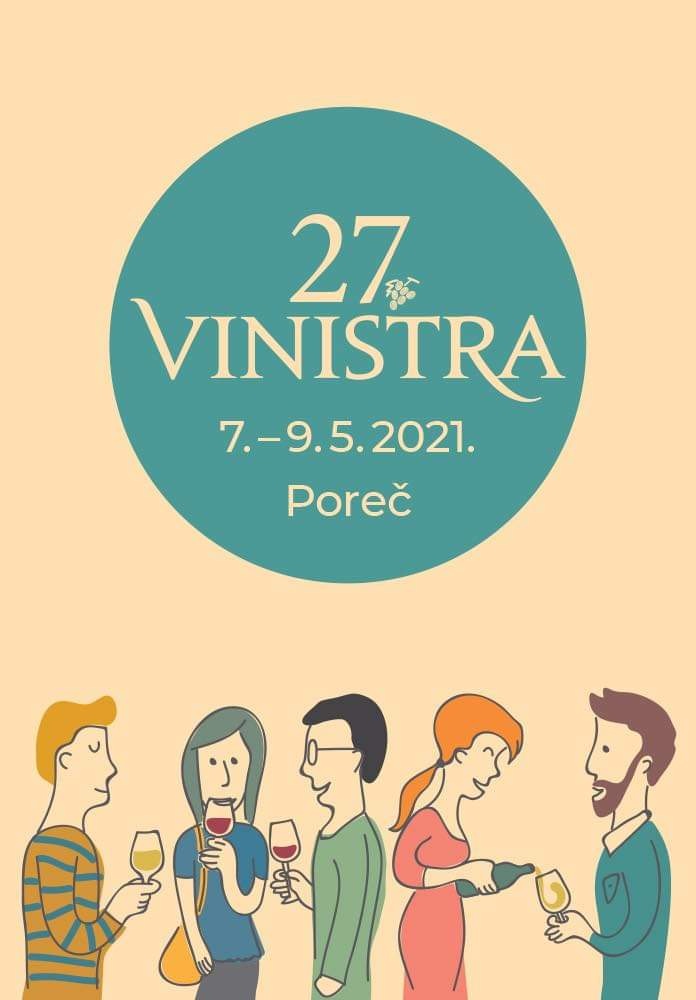
Vinistra
Traditionally, the best overture for Vinistra is the international evaluation named the World of Malvasia, which will be held for the 12th time, from April 12 to 16, 2021, at the Parentium Plava Laguna Hotel in Poreč. Year after year, the World of Malvasia breaks records in quality and number of samples.
"The informal world championship of the most famous Istrian variety is being held this year as part of a three-day international evaluation of wine and spirits, which brings together the most famous wine experts from Croatia and the region. Of course, everything will be in line with epidemiological measures because our health and safety come first. As usual, the evaluation results will be made public as part of the 27th Vinistra," says Benvenuti.
As 24sata recalls, the traditional Vinistra fair was held in the Žatika hall in Poreč for years before the tradition was interrupted for the first time last year due to the coronavirus pandemic. Almost all important politicians, presidents, businessmen used to come to Vinistra, as well as those who wanted to be photographed or filmed by journalists while they are enjoying the top drops of 'grape' juice.
Vinistra is a regional and international exhibition of Istrian wines and equipment for viticulture and winemaking. The longest-running exhibition of this type is traditionally held in the Istrian town of Poreč. The fair consists of an evaluation and exhibition part, and besides wine, olive oils and brandies are also evaluated.
Istria is continually improving wine quality and is a top eno-gastronomic destination. This is confirmed by the constant increase in the number of indigenous varieties' samples, more quality of average wine samples, and new names awarded by an expert jury every year.
To read more about lifestyle in Croatia, follow TCN's dedicated page.


